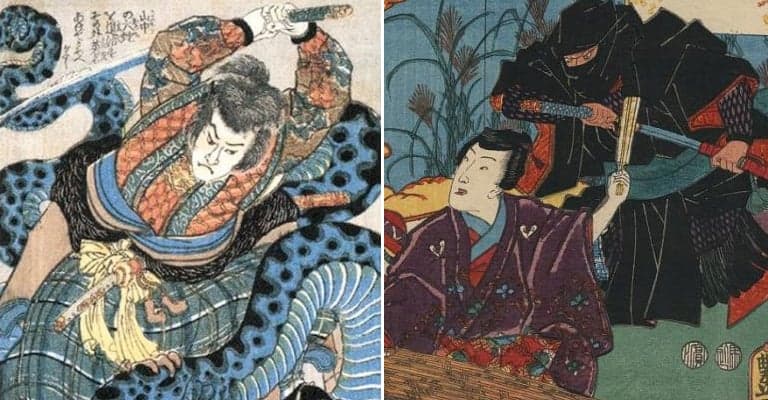Nothing stirs the imagination quite like ninjas. If you grew up watching Power Rangers, pretending to be James Bond, and playing Mortal Kombat video games, you probably developed a love for ninjas. In fact, if you appreciate virtually any aspect of pop culture, you are bound to be somewhat enamored with the legendary warriors. They specialized in stealth and unarmed combat during the feudal period of Japanese history, yet today, the popular imagination envisions ninjas as being entirely different than what they indeed were.
For example, when you consider that ninjas were very skilled spies, it makes no sense that they would dress in all-black catsuits and carry nun-chucks. They were trained as assassins, but most of their work was carried out in full daylight, with the cleverly disguised as peasants carrying out their day jobs, not unlike Clark Kent working as a newspaper reporter. Their weapons resembled farm tools and could actually be dissembled to show that they were composed of things like sickles and shears.
Ninjas were feared warriors, yet they came mostly from the lower classes, effectively turning Japan’s rigid social hierarchy upside-down. They fought against the samurai and warlords, yet some samurai doubled as ninjas. When their forces were destroyed mainly in the 16th century, many of them went on to serve the shogun in Tokyo and became the first “secret service.” They wrote down their craft to preserve it for the future, yet it has been primarily misrepresented, both in Japanese folklore and Western pop culture. The continued importance of ninjas in the Western media, though, demands that we take a closer look at these legendary warriors of feudal Japan.

16. Shinobis and Ninjas Are the Same Things
Today, the favorite way of talking about the stealthy warriors who rivaled the shogunate is to refer to them as “ninjas.” What many people do not realize is that “ninja” is a Chinese word and itself serves as a testament to the Chinese roots of the ninjas. It literally translates as “the one who endures,” a rather appropriate appellation for someone trained in this particular fighting style. It is spelled in the Kanji script with two letters, which, in Chinese, are pronounced “nin sha.”
In Japanese, the same two Kanji letters that are pronounced “nin sha” are pronounced “shinobi no mono.” “Shinobi” refers to quietness and stealth, essential qualities in a ninja fighter. The ninja fighters were referred to by the Japanese as shinobi. However, foreign languages sometimes take on a sense of status; consider how when someone is speaking in English and then uses a French phrase, he or she may come across as being more educated, learned, or important. The same idea was held in Japan, with Chinese being a “superior” language that indicated greater status. Referring to the fighters as “ninjas” instead of as “shinobi” indicated a higher status and level of respect for them. However, in modern Japan, they are still primarily referred to as shinobi.

